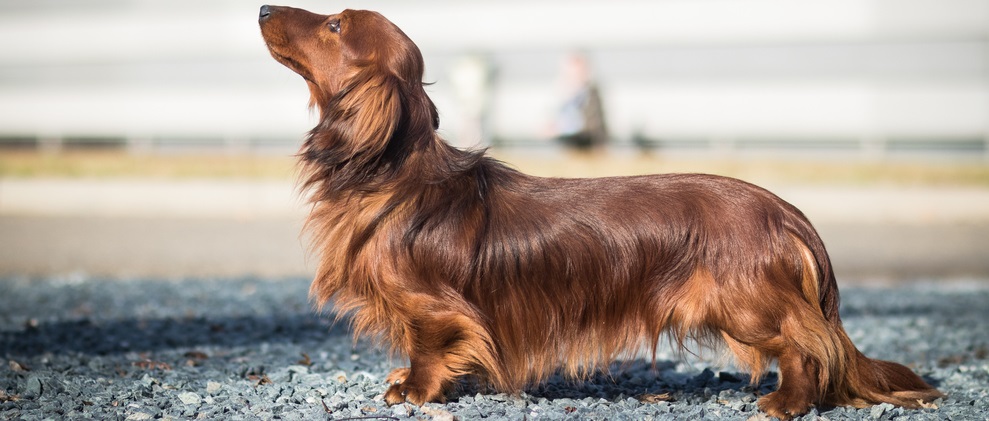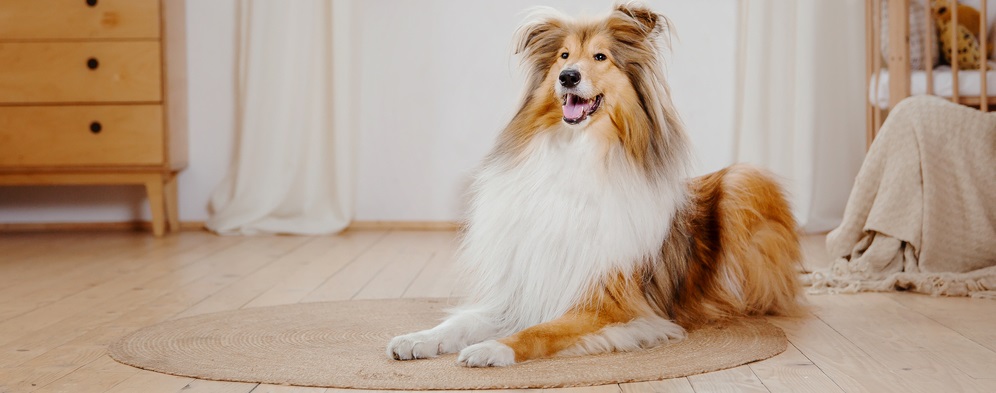It’s normal and healthy for your dog to shed some hair. And for some breeds—you can expect vacuuming to be a constant necessity. That said, if you notice that your dog is losing far more hair than usual, it could be linked to a serious underlying health condition.
If you’ve recently wondered why is my dog’s fur falling out, this guide is for you. Today, we’ll discuss five common causes of dog hair loss and suggest some possible solutions.
Allergies
The most frequent cause of dog’s hair loss in dogs is allergies. Typically a skin allergy is the result of environmental triggers like:
- Molds
- Pollens
- Dust mites
- Parasites (fleas, mites)
According to Pets WebMD, “Flea bites are behind most dog allergies, however. Along with hair loss from licking and biting the irritated areas, signs of flea allergies include itching and redness. For a particularly allergic dog, it may take as little as one flea bite to start an allergic reaction that lingers for days.”
It’s also worth considering whether your pup has a food allergy. Some dogs are allergic to beef, dairy, wheat, chicken, corn, or soy.
If your dog regularly scratches, bites, itches or manifests red spots, allergies could be the reason. Taking a trip to the vet may be your best option to diagnose the issue and then provide recommendations for treatments or diet changes. Additionally, your pup could be allergic to the type of shampoo used during your bathing routine. If you are wondering how to make a dog’s coat shiny while being aware of possible allergies, consider using a hypoallergenic shampoo.
Infection
Along the same lines, a skin infection from ticks, mange mites, or fleas can contribute to canine alopecia (a technical word for patchy hair loss or bald spot).
So, how do you know if that’s the reason? Alongside hair loss around the chest, abdomen, eyes, and ears, other signs of mites or fleas include itchy skin, redness, and inflammation.
Dogs can also contract ringworm, a fungus that leads to hair loss. According to American Kennel Club:
“Ringworm usually presents as circular areas of hair loss throughout the body. These lesions may start to heal in the center as they enlarge, creating a patchy appearance, and may become inflamed or scabbed. Ringworm usually does not itch. The affected hair follicles are brittle and break easily, which helps spread the disease throughout your home.”
And what are signs of ringworm? Schedule a visit to your vet if you notice that your dog is losing hair while also manifesting any of the following symptoms:
- Dry, brittle hair
- Red, inflamed skin
- Scabs
- Brittle claws
Pressure Sores
Commonly referred to as decubitus ulcers or bedsores, pressure sores are localized injuries caused by your pup’s hips, hocks, or elbows, frequently rubbing against hard surfaces. The constant friction and pressure often result in callus formations, cracks, bleeding, and hair loss. Per the Veterinary Nurse:
“Decubitus ulcers result from pressure on the skin where the bodyweight presses joints or prominent muscle masses against a surface, e.g., bedding or operating table. As a result, capillaries in the skin are compressed and unable to supply the cells with vital oxygen and nutrients and remove wastes, leading to ischaemic insult.”
You should be particularly alert for decubital ulcers if your dog is older or a large and heavy breed.
Genetics
If you’re wondering how to stop a dog from shedding, sometimes you can’t. Some dog breeds are already genetically predisposed towards severe shedding, hair loss or baldness. For instance, there are hairless dogs, such as the American Hairless Terrier. Other dogs like Dachshunds and Chihuahuas tend to suffer from patchy or pattern baldness. Similarly, some densely-coated breeds like Huskies and Malamutes experience post-clipping alopecia.
Cushing’s Disease
Cushing’s Disease, also known as hyperadrenocorticism, results from an overproduction of the cortisol hormone. One of its major symptoms is a significant loss of hair. This is typically a naturally occurring syndrome, but it could also be caused by the administration of high dosages of drugs like dexamethasone or prednisone. Cushing’s disease most frequently occurs in dogs six years or older. Per the AKC:
“The pituitary gland, a tiny gland found at the base of the brain, releases adrenocorticotropic hormone (ACTH), which in turn tells the adrenal glands to release cortisol, also called glucocorticoids. In a pet with CD, a tumor in the pituitary gland or, less commonly, in one of the adrenal glands, causes the cortex to release an excess amount of cortisol.”
Aside from hair loss, what are the symptoms of Cushing’s Disease? They include:
- Extreme thirst
- Frequent urination
- Muscle loss
- Weakness
- Obesity
- Lack of energy
- Lesions on the skin
If you notice any of these signs, be sure to take your pup to the vet. By running blood, urine, and adrenocorticotropic hormone stimulation tests, they’ll be able to diagnose your dog’s condition.
Vetericyn Can Help with Hairloss & Prevent Hair Mats
Wondering how to get mats out of dog hair and how to prevent excessive hair loss?
The truth is, it could be the result of behavioral or genetic issues. Fortunately, you can take effective steps to help combat canine hair loss and promote hair growth. This is where Vetericyn can assist.
Our formulated supplements and shampoos can protect and fortify your pup’s coat to prevent dry skin. With frequent maintenance, treatment, and grooming, you can help prevent canine hair loss and take the best steps to care for your dog’s hair.
If you’re looking for more ways to support your dog, Vetericyn is ready to help!
Sources:
- WebMD. Bald Spots in Dogs. https://pets.webmd.com/dogs/dog-bald-spot#1
- AKC. Ringworm in Dogs — Symptoms, Treatment, and Prevention. https://www.akc.org/expert-advice/health/ringworm-in-dogs/
- The Veterinary Nurse. Decubitus ulcer: risk factors, prevention, and treatment. https://www.theveterinarynurse.com/review/article/decubitus-ulcer-risk-factors-prevention-and-treatment
- AKC. Cushing’s Disease in Dogs. https://www.akc.org/expert-advice/health/cushings-disease-in-dogs/





